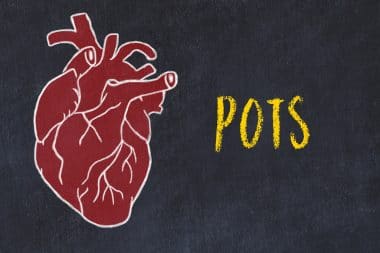Arteries are blood vessels that carry oxygen-rich blood to all areas of your body. If an artery weakens a balloon like bulge can develop. This bulge is an aneurysm. You may have an aneurysm and have no symptoms or knowledge of it. Aneurysms can occur in any arteries but most aneurysms occur in the aorta. The aorta is the largest blood vessel and the main artery of the body that carries blood from the heart to the body. The aorta is located in the chest and the abdomen.
Types of Aneurysms
Thoracic Aortic Aneurysm – (TAA) An aneurysm that occurs in the chest portion of the aorta above the diaphragm. The diaphragm is the muscle that helps you breathe. This aneurysm may not cause symptoms unless it dissects (the artery wall splits) or grows large.
Abdominal Aortic Aneurysm – (AAA) An aneurysm that occurs in the abdominal portion of the aorta. This type of aneurysms develop slowly. They rarely cause signs or symptoms unless they rupture. This is the most common of the aortic aneurysms.
Cerebral Aneurysm / Brain Aneurysm / Berry Aneurysm – This is a week spot in a blood vessel inside the brain. Brain aneurysms can grow, leak or explode. Bleeding in the brain is called a hemorrhagic stroke. A stroke occurs when blood flow is interrupted to part of the brain. Brain cells quickly die without blood to supply oxygen and nutrients and to remove waste products.
Popliteal Artery — An aneurysm that occurs in the leg behind the knee.
Mesenteric Artery — An aneurysm that occurs in the intestine.
Splenic Artery – An aneurysm that occurs in the spleen.
Conditions that Increase Risk
- High Cholesterol -Atherosclerotic disease (plaque buildup in arteries)
- High blood pressure — (can weaken and enlarge blood vessels)
- Males are at higher risk than females for an aortic aneurysm
- Females are at higher risk over males for a brain aneurysm
- Age – Risk increases for those over 60 years old for most types of aneurysms. Brain aneurysm risk increases for those over 40 years old with an average age of 50 years old.
- A family history of heart conditions and/or aneurysms.
- Smoking
- Obesity
- Pregnancy
- Use of Cocaine
- Traumatic Head Injury (brain aneurysm)
Symptoms
You may have no symptoms. Most do not so paying attention to increased risk factors is important.
An aneurysm close to the surface of the skin may be painful and visible.
A rupturing aneurysm can cause: pain, clammy skin, dizziness, vomiting, increased heart rate, low blood pressure.
Abdominal Aortic Aneurysms AAA Symptoms can include: A throbbing feeling in your abdomen. Pain in your back or the side of your abdomen. Steady abdomen pain that lasts for hours or days. Your doctor may feel a throbbing mass while checking you abdomen. If a AAA ruptures you can have severe pain in your lower abdomen and back, nausea, constipation, urinary problems, sweaty skin, light-headed, rapid heart rate when standing.
Thoracic Aortic Aneurysms TAA Symptoms can include: Pain in jaw, back or chest. Coughing and or hoarseness. Trouble breathing, swallowing or shortness of breath. If a TAA dissects or ruptures you may feel pain in your chest and arms and have stabbing pain starting in your upper back and going into your abdomen.
Cerebral Aneurysms / Brain Aneurysm Symptoms can include: Localized headache, dilated pupils, double or blurred vision, pain behind eye, difficulty speaking, weakness and numbness.
Diagnosis
Early diagnosis and treatment can facilitate the best outcomes. Doctors have a wide range of tools to use to check for aneurysms.
- Ultrasound
- Echocardiography
- CT Scan (dye and x rays) – can identify blood vessel irregularities.
- MRI
- Angiogram (dye and x rays to examine arteries)
Screening
Because aneurysms can develop and grow without any signs or symptoms people who are at high risk can benefit from routine screening. Talk with doctor about your risk factors and family history to see if you should be monitored more closely.
If you have an aneurysm your doctor will want to monitor you on a regular basis to look for signs of increase in size and rate of growth.
Treatment
Monitoring – Regular checkups will be required if you have a diagnosed aneurysm to monitor changes to the condition. How often this happens is based on the size of the aneurysm and how fast it is growing.
Medicines may be used to lower blood pressure to reduce the risk of a rupture.
Surgery — Surgery to repair the damaged blood vessel may be required. A section of affected the artery is replaced.
Endovascular Repair — In this surgery the aneurysm isn’t removed a graft is inserted into the blood vessel to strengthen it.
Call 911 if you have a ruptured aneurysm!
Brain Aneurysm Statistics
- In the United States 1 in 50 people have an unruptured brain aneurysm.
- Ruptured brain aneurysms are fatal in 40% of cases.
- 66% of those with a ruptured brain aneurysm will have permanent neurological damage.
- Brain aneurysms mostly occur in ages 35-60.
- A ruptured brain aneurysm can cause a stroke.
https://www.nhlbi.nih.gov/health-topics/aneurysm https://www.bafound.org/about-brain-aneurysms/brain-aneurysm-basics/warning-signs-symptoms/ https://medical-dictionary.thefreedictionary.com/stroke https://www.webmd.com/brain/brain-aneurysm#1 https://www.healthline.com/health/aneurysm#diagnosis https://www.heart.org/en/health-topics/aortic-aneurysm/what-is-an-aneurysm








Reply